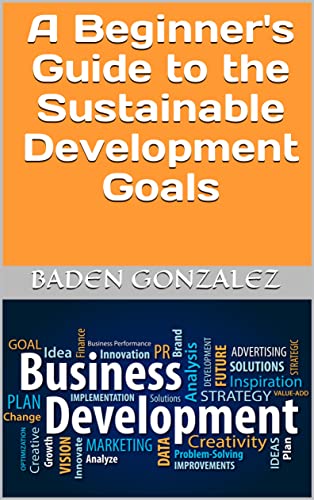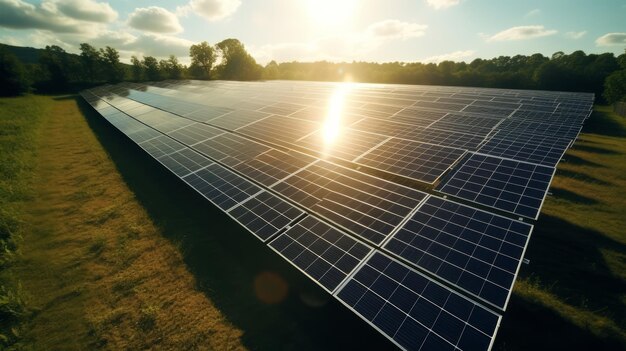
What is Sustainability? A Comprehensive Beginner’s Guide to a Greener Future
In today’s fast-paced world, you’ve probably heard the term "sustainability" popping up everywhere – in news headlines, product labels, and even conversations with friends. It’s a buzzword, for sure, but what does it really mean? Is it just about recycling, or something much bigger?
For many, the concept of sustainability can feel overwhelming or abstract. But don’t worry! This comprehensive beginner’s guide is designed to demystify sustainability, breaking it down into easy-to-understand concepts. By the end, you’ll have a clear grasp of what sustainability is, why it matters, and how you can become a part of the solution.
Understanding the Core: What Exactly IS Sustainability?
At its heart, sustainability is about meeting the needs of the present without compromising the ability of future generations to meet their own needs.
This widely accepted definition comes from the 1987 Brundtland Report, titled "Our Common Future," by the United Nations World Commission on Environment and Development. It’s a powerful statement because it highlights two crucial ideas:
- Present Needs: We need resources (food, water, energy, shelter) to live well now.
- Future Needs: We must ensure those same resources, and a healthy planet, are available for our children, grandchildren, and generations far into the future.
Think of it like a family budget. You want to spend money on what you need today, but you also need to save and invest so your children and grandchildren have financial security. Sustainability applies this same logic to the entire planet and its resources.
The Three Pillars of Sustainability: Planet, People, Prosperity
Sustainability isn’t just about the environment. It’s a holistic concept that balances three interconnected dimensions, often referred to as the "Three Pillars" or the "Triple Bottom Line." For true sustainability, all three must be considered and supported equally:
1. Environmental Sustainability (Planet)
This pillar focuses on protecting, conserving, and restoring our natural resources and ecosystems. It’s about ensuring the health of the Earth, which provides everything we need to survive.
Key Concerns & Goals:
- Climate Change: Reducing greenhouse gas emissions to prevent global warming.
- Resource Depletion: Conserving finite resources like fossil fuels, fresh water, and minerals.
- Pollution: Minimizing air, water, and land pollution from waste, chemicals, and industrial processes.
- Biodiversity Loss: Protecting plant and animal species and their habitats.
- Ecosystem Health: Maintaining healthy forests, oceans, wetlands, and other natural systems that provide vital services (e.g., clean air, water filtration).
Examples:
- Switching to renewable energy sources (solar, wind).
- Protecting forests and planting new trees.
- Reducing waste through recycling and composting.
- Conserving water in homes and industries.
- Developing eco-friendly products and technologies.
2. Social Sustainability (People)
This pillar focuses on fairness, equality, and human well-being within and across communities. It’s about ensuring everyone has access to basic needs, opportunities, and a good quality of life.
Key Concerns & Goals:
- Human Rights: Ensuring fair labor practices, safe working conditions, and respect for all individuals.
- Equity & Justice: Addressing social inequalities, poverty, and discrimination.
- Health & Education: Providing access to quality healthcare, education, and social services.
- Community Development: Building strong, inclusive, and resilient communities.
- Cultural Preservation: Respecting and preserving diverse cultures and traditions.
Examples:
- Ensuring fair wages and safe working conditions for employees.
- Investing in education and healthcare programs.
- Promoting diversity, equity, and inclusion in workplaces and communities.
- Supporting local communities and empowering marginalized groups.
- Designing cities and infrastructure that are accessible and livable for everyone.
3. Economic Sustainability (Prosperity/Profit)
This pillar focuses on creating long-term economic prosperity that benefits everyone, without depleting natural resources or harming society. It’s not just about making money, but about creating stable, resilient economies that can thrive sustainably.
Key Concerns & Goals:
- Green Economy: Developing industries and jobs that are environmentally friendly and socially responsible.
- Efficient Resource Use: Using resources efficiently to minimize waste and maximize value.
- Local Economies: Supporting local businesses and supply chains.
- Ethical Business Practices: Operating with transparency, accountability, and integrity.
- Innovation: Fostering new technologies and business models that promote sustainability.
Examples:
- Investing in renewable energy infrastructure.
- Promoting circular economy models (reducing, reusing, repairing, recycling materials).
- Supporting fair trade practices that benefit producers in developing countries.
- Encouraging sustainable tourism.
- Creating "green jobs" in sectors like renewable energy and conservation.
The Interconnection: It’s vital to understand that these three pillars are not separate silos. They are deeply interconnected. For instance, a thriving economy needs a healthy environment for resources and a healthy society for a productive workforce. Similarly, environmental protection efforts often create new economic opportunities (e.g., green jobs) and improve public health (a social benefit).
Why is Sustainability So Important?
Sustainability isn’t just a trendy concept; it’s critical for our survival and well-being. Here’s why:
- Protecting Our Planet: We only have one Earth. Climate change, pollution, and resource depletion threaten our natural systems, leading to extreme weather, water shortages, and loss of biodiversity. Sustainability aims to reverse these trends.
- Ensuring Future Generations Can Thrive: Without sustainable practices, we risk depleting resources and degrading the environment to the point where future generations won’t have the same opportunities or quality of life we do.
- Improving Human Health and Well-being: Clean air, clean water, and access to nutritious food are fundamental human rights. Sustainable practices lead to healthier environments and communities, reducing illness and improving quality of life.
- Economic Stability and Innovation: Resource scarcity and environmental disasters can disrupt economies. Sustainability fosters innovation, creates new "green" jobs, and builds more resilient and stable economic systems.
- Social Equity and Justice: Many environmental burdens disproportionately affect vulnerable communities. Sustainability advocates for a more just world where everyone has access to a healthy environment and opportunities.
- Long-Term Resource Security: By using resources wisely and transitioning to renewable alternatives, we reduce our reliance on finite resources and enhance our long-term security.
Sustainability vs. "Green" vs. "Eco-Friendly": What’s the Difference?
These terms are often used interchangeably, but there’s a subtle yet important distinction:
- "Green" or "Eco-Friendly": These terms usually refer to products, practices, or technologies that are beneficial to the environment or cause less harm to it. For example, an "eco-friendly" cleaning product might use natural ingredients.
- "Sustainability": This is a much broader and more holistic concept. While it includes environmental considerations, it also integrates social and economic factors. A truly "sustainable" product wouldn’t just be eco-friendly; it would also be produced with fair labor practices (social) and contribute to a stable, ethical economy (economic).
Think of "green" as a piece of the sustainability puzzle. All sustainable solutions are green, but not all green solutions are fully sustainable if they ignore social or economic impacts.
Real-World Examples of Sustainability in Action
Sustainability isn’t just theory; it’s being implemented all around us:
- Individual Level:
- Recycling and Composting: Diverting waste from landfills.
- Using Reusable Bags and Water Bottles: Reducing single-use plastics.
- Choosing Public Transport, Biking, or Walking: Reducing carbon emissions.
- Buying Local and Seasonal Food: Supporting local economies and reducing food miles.
- Conserving Energy and Water at Home: Reducing resource consumption.
- Community Level:
- Community Gardens: Promoting local food production, community building, and green spaces.
- Farmers Markets: Supporting local agriculture and reducing transportation emissions.
- Bike-Share Programs: Encouraging sustainable transportation.
- Renewable Energy Co-ops: Communities investing in shared solar or wind power.
- Business Level:
- Patagonia: Known for its sustainable clothing, using recycled materials, promoting repairs, and advocating for environmental causes.
- Interface: A leading manufacturer of modular carpet tile, famous for its mission to eliminate its negative environmental impact by 2020 (Mission Zero) and now focused on reversing climate change (Climate Take Back).
- "Circular Economy" Companies: Businesses designing products for longevity, repairability, and easy recycling or upcycling, minimizing waste.
- Government Level:
- Renewable Energy Policies: Governments offering incentives for solar panels or wind farms.
- Protected Areas: Establishing national parks and reserves to conserve biodiversity.
- Public Transportation Investments: Developing efficient train and bus networks.
- Sustainable Urban Planning: Designing walkable cities with green spaces and efficient resource use.
- International Agreements: Like the Paris Agreement on climate change, aiming for global cooperation on environmental goals.
How Can YOU Be More Sustainable? Practical Steps for Beginners
Feeling inspired? The good news is that every small step contributes to a larger movement. You don’t have to overhaul your entire life overnight. Start with a few changes and build from there!
Here are practical ways you can embrace sustainability:
-
Reduce, Reuse, Recycle (The Golden Rule):
- Reduce: Buy less, borrow instead of buying, choose durable goods over disposable ones.
- Reuse: Use reusable bags, water bottles, coffee cups, food containers. Donate or repurpose items instead of throwing them away.
- Recycle: Know what your local recycling program accepts and recycle correctly.
-
Conserve Energy at Home:
- Turn off lights and unplug electronics when not in use.
- Switch to LED light bulbs.
- Adjust your thermostat – warmer in summer, cooler in winter.
- Air dry clothes when possible.
-
Save Water:
- Take shorter showers.
- Turn off the tap while brushing your teeth or washing dishes.
- Fix leaky faucets.
- Consider water-efficient appliances.
-
Rethink Your Food Choices:
- Reduce Food Waste: Plan meals, store food properly, compost scraps.
- Eat More Plants: Reducing meat consumption has a significant environmental impact.
- Buy Local and Seasonal: Supports local farmers, reduces transportation emissions.
- Choose Organic/Sustainable: Supports healthier farming practices.
-
Sustainable Transportation:
- Walk, bike, or use public transport whenever possible.
- Carpool.
- Combine errands to reduce driving trips.
-
Shop Consciously:
- Research Brands: Support companies committed to ethical labor and environmental practices.
- Choose Durable Goods: Invest in items that last, reducing the need for frequent replacements.
- Buy Secondhand: Thrift stores, consignment shops, and online marketplaces are great for reducing demand for new production.
- Avoid Fast Fashion: Opt for quality over quantity in clothing.
-
Educate Yourself and Others:
- Keep learning about sustainability issues.
- Share what you learn with friends and family.
- Engage in conversations about how to make your community more sustainable.
-
Get Involved:
- Volunteer for local environmental groups.
- Support policies that promote sustainability.
- Vote for leaders who prioritize environmental and social well-being.
Common Misconceptions About Sustainability
- "Sustainability is too expensive." While some sustainable products have a higher upfront cost, they often lead to long-term savings (e.g., energy-efficient appliances, reusable items) and prevent future environmental clean-up costs.
- "It’s just for environmentalists." Sustainability is for everyone. It’s about ensuring a healthy planet and equitable society for all people, regardless of their background or political views.
- "My individual actions don’t matter." While systemic change is crucial, individual actions collectively create massive impact. Your choices influence markets, set trends, and inspire others.
- "It means sacrificing comfort and progress." True sustainability is about smart progress and innovation that improves quality of life without depleting resources. It’s about finding better, more efficient ways of living, not going back to the Stone Age.
The Future of Sustainability: A Continuous Journey
Sustainability is not a destination; it’s an ongoing journey of improvement and adaptation. As our understanding of the planet and human needs evolves, so too will our approaches to sustainability. It requires constant innovation, collaboration across borders, and a commitment from individuals, businesses, and governments alike.
The challenges are significant, but the potential for a thriving, equitable, and healthy future is even greater. By embracing the principles of sustainability, we can work together to build a world where both people and the planet can flourish for generations to come.
Frequently Asked Questions (FAQs) About Sustainability
Q1: Is sustainability only about climate change?
A: No. While climate change is a major focus of environmental sustainability, the concept of sustainability is much broader. It encompasses environmental protection, social equity, and economic viability.
Q2: Can one person really make a difference in sustainability?
A: Absolutely! Every conscious choice, no matter how small, contributes to a larger collective impact. Your actions can inspire others, create demand for sustainable products, and influence broader systemic change.
Q3: Is living sustainably expensive?
A: Not necessarily. While some sustainable products may have a higher upfront cost, many sustainable practices (like reducing waste, conserving energy, or eating less meat) can actually save you money in the long run. Investing in durability over disposability also reduces overall spending.
Q4: What’s the difference between corporate social responsibility (CSR) and sustainability?
A: CSR often refers to a company’s initiatives to take responsibility for its impact on society and the environment. Sustainability, in a corporate context, is a more integrated and holistic approach where environmental, social, and economic considerations are fundamental to the business model and strategy, not just add-on programs.
Q5: How can I learn more about sustainability?
A: There are many resources! You can read books, follow reputable news sources on environmental and social issues, watch documentaries, take online courses, or join local environmental groups. Start by exploring the United Nations Sustainable Development Goals (SDGs) for a comprehensive overview of global sustainability challenges.



Post Comment